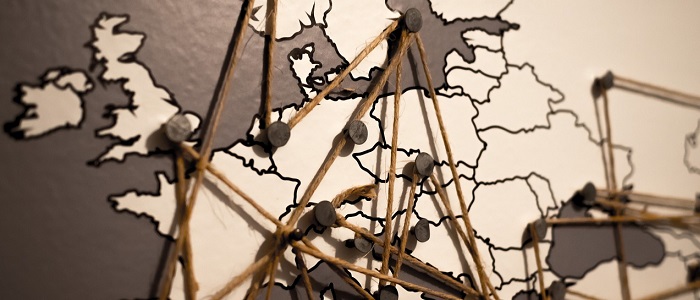I have a great premise and a handful of important NPCs, but how do I make that an ADVENTURE? This week we dive into ways to organize an adventure. We’ll also discuss how to set the pace for the party and how to ensure we’ve got a variety of tasks and encounters for the players to experience.
Organization
 My first step is always to outline the adventure. If you’re working with a developer, then they’ve probably provided you an overview or even a rough outline. We want to get it fleshed out a little more so that when it comes down to writing the whole thing up it feels more like “paint by numbers” as you follow your well thought out outline. Without one, your adventure might feel like it lacks direction and purpose. If you’re still not sure where to start, brainstorm a list of things the PCs might do during your adventure, or any encounter ideas you have. I like to put each encounter on an index card and then keep re-ordering them until it feels right.
My first step is always to outline the adventure. If you’re working with a developer, then they’ve probably provided you an overview or even a rough outline. We want to get it fleshed out a little more so that when it comes down to writing the whole thing up it feels more like “paint by numbers” as you follow your well thought out outline. Without one, your adventure might feel like it lacks direction and purpose. If you’re still not sure where to start, brainstorm a list of things the PCs might do during your adventure, or any encounter ideas you have. I like to put each encounter on an index card and then keep re-ordering them until it feels right.
Ok, let’s take our kidnapping dragon idea and give it a strong outline. We’ve already decided on some basic pieces: the dragon has been kidnapping maidens from the town, she’s also been stealing basic fishing supplies and tools. These can go into the background so that the GM knows how to set the stage and answer any questions the PCs have. Next, we’re going to want to give a brief summary so the GM knows what to expect and how to connect all the dots of your adventure. Don’t hold back on important details; this information is for the GM and they need to know what’s going on. If the mayor is a doppleganger, let the GM know that up front. It should be a surprise to the players, not the GM.
Ok, here’s a basic outline based on what we’ve discussed in Craft (Adventure)—Brilliant Inspiration:
1. Background
1.1. Local bronze dragon has learned how to change shape into a human and wants guidance.
1.2. She decides to get help from the local town’s ladies, but forgets to ask permission and accidentally kidnaps them.
1.3. She also steals supplies from the prosperous village to help out a smaller fishing village that’s having trouble with marauding sahuagin.
1.4. The city mayor has issued a bounty for the kidnapper.
2. Summary
3. Adventure Hooks
3.1. PCs get a contract to find the kidnappers and bring the maidens back safely.
3.2. One of the PCs is related to one of the maidens who was kidnapped.
3.3. One of the PCs is kidnapped; let them play a temporary character until their character is “rescued.”
4. Investigation – PCs use skills and roleplay to find clues around the city, leading them to discover that a dragon flew away to a nearby island with the maidens
5. Dragon’s Lair
5.1. Exterior – PCs fight and/or negotiate with a band of kobolds who insist on helping the bronze dragon, but are more aggressive about it than she’d like.
5.2. Interior – PCs encounter the dragon herself amidst the “kidnapped” maidens. The dragon is in human form. They meet Blind Maiden, who tried to prevent the PCs from killing the dragon.
6. Nearby Village – At the dragon’s request, the PCs visit the local fishing village to help the locals.
6.1. Ambush! – Sahuagin attack while the PCs are visiting, the village asks the heroes for help.
6.2. Cleaning up – The village asks the PCs to help them repair their village after the horrible storm and subsequent sahuagin attacks.
6.3. Counter Attack – The PCs work with the bronze dragon to gain water breathing and go down after the sahuagin and run them out of the reef, allowing the village to fish in peace.
7. Aftermath – Returning the maidens
7.1. Negotiating with a Dragon – Now that the village is safe, the PCs convince the dragon to let the maidens go home
7.2. The city mayor rewards the PCs and thanks them for returning the maidens.
8. Conclusion/Continuing the Adventure
This is looking like a nice little adventure! Now, let’s go over it and see if we find anything we’re not happy with.
Pacing
 The order and types of encounters are important, including roleplaying. If they get too much combat or too much roleplay at once, some of your players might start to get bored. You want to keep the pacing so that there is both rising action and lulls in between to give them a rest. Imagine what a roller coaster feels like: you usually start with a climb to the top of a precipice (the adventure hook), then some smaller ups and downs (the beginning of the adventure), and finally a big finish with a loop or very long sharp drop (the climax), followed by some gentle deceleration (the conclusion).
The order and types of encounters are important, including roleplaying. If they get too much combat or too much roleplay at once, some of your players might start to get bored. You want to keep the pacing so that there is both rising action and lulls in between to give them a rest. Imagine what a roller coaster feels like: you usually start with a climb to the top of a precipice (the adventure hook), then some smaller ups and downs (the beginning of the adventure), and finally a big finish with a loop or very long sharp drop (the climax), followed by some gentle deceleration (the conclusion).
For raising action, this is as simple as keeping more straight-forward combats and challenges near the beginning of the story and saving the wacky ideas for the climax. You want the PCs to feel like each event is bigger and more important that the last. We also break up the fights with roleplaying and skill challenge opportunities. Here’s what we’ve done with our outline:
We start out with an investigation, then a fight with kobolds. The PCs have a scene with the dragon that will probably be role-play and then a small fight with sahuagin. The PCs get a chance to help fix up the town through some skill challenges, then finally get into a big underwater fight going after the raiders. After a big final battle, the PCs get to rest as they’ve set everything right and get to claim their rewards from the dragon and the city mayor.
Variety
The last important note is variety of encounters; this includes combat and roleplay encounters. Do all the roleplay encounters feel the same? We’ve got an investigation, a chat with a dragon which will probably feel like a negotiation, and finally a skill challenge to help the villagers.
Are all the combats against the same type of enemies? In our little adventure we have the PCs fighting kobolds and sahuagin, then sahuagin again. How can we mix it up? Find out in two weeks when we discuss building encounters!





